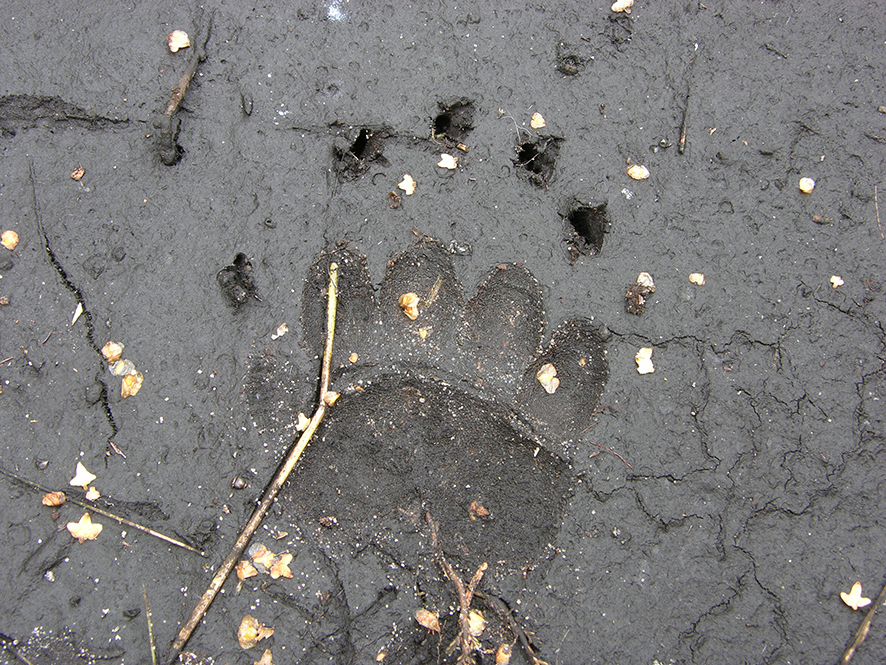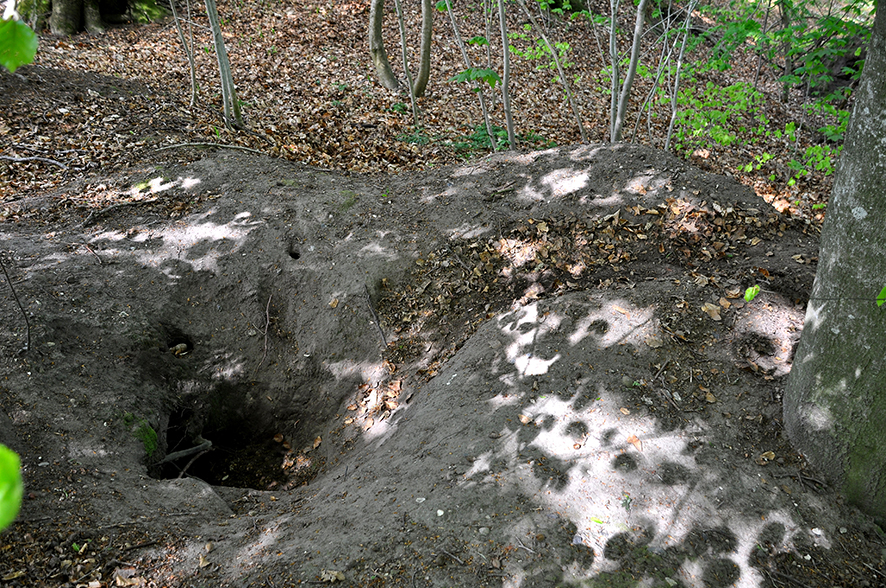Badger
- Denmark's second largest predator
Until recently, the badger was Denmark’s largest land predator. Now it faces competition from the wolf. There are many more badgers in the Danish nature than you might think. The population is estimated at 30,000-40,000 animals. As it is a nocturnal animal and sleeps during the day, not many people get to see a badger. Unfortunately, you can sometimes see badgers by the road, which have been killed in a traffic accident.
Fox den or badger den
Just like the fox, the badger lives in a den which it digs in a slope or hill, ideally in a deciduous forest, scrub or hedgerows. The badger lives in small family groups, and the den may have several nest chambers and exits. The badger’s den can be recognised that the fact that it has a groove or furrow in front of the entrance. This is formed when the badger backs out of the den, as it scrapes the earth out of the way. A fox den has a pile of earth in front of the entrance, which the fox has dug out doggy-style.
Coal in the boots
According to an ancient myth, an aggravated badger could attack a hunter and bite him in the legs until you could hear the bones ”crunch”. If you put charcoal in your boots when you went badger hunting, you could trick the badger into believing that the crunching sound from the coal was coming from the hunter's bones. In reality, the badger is a shy animal that flees when it sees people approaching. Today the badger is a protected species in Denmark.

Track: The badger’s footprints are wider than dog tracks and make a clear impression of the long claws.

The badger buries its scat in holes in the ground around its den.
Facts
The badger is 60-90 cm long, has a shoulder height of about 30 cm and weighs up to 20 kg. It has thick grey hair and a distinctive black and white striped head. The badger feeds on carrion and small animals and is particularly fond of earthworms. It sniffs its way to its prey, with a sense of smell that is 700 times better than humans. It spends more than half its life in its den.

